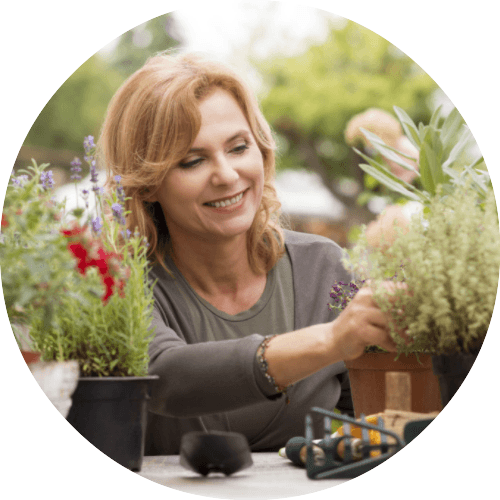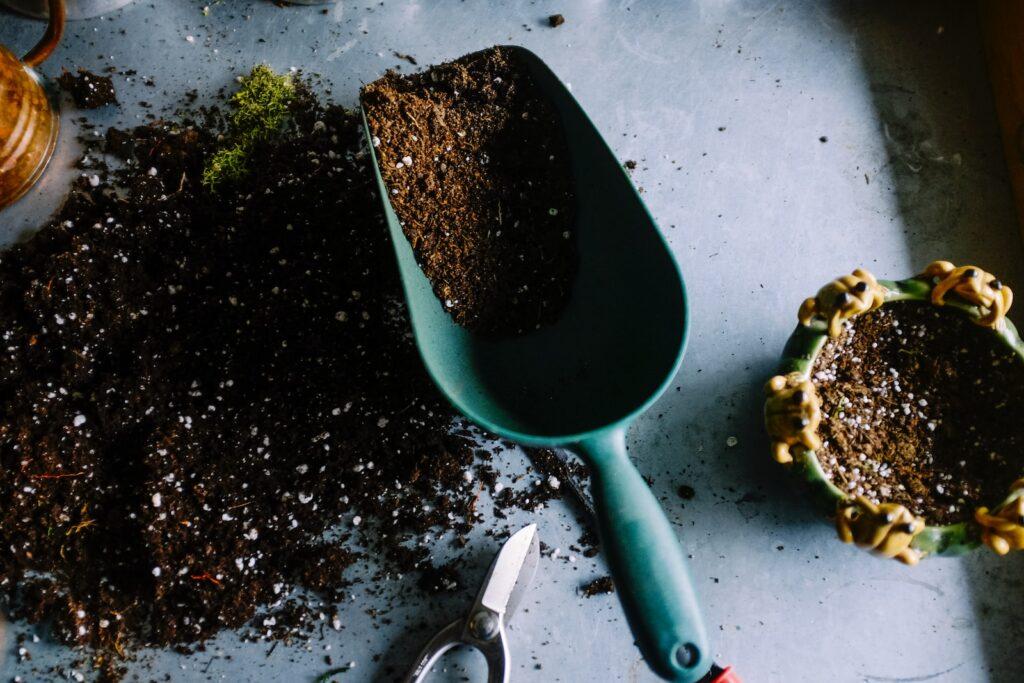Rated & Reviewed is reader-supported. When you buy through links on our site, we may earn an affiliate commission. Learn more.
Gardening is not only a fulfilling hobby but also a great way to engage children in a hands-on learning experience. By introducing kids to gardening at a young age, they can develop important skills, learn about nature, and cultivate a sense of responsibility. To make gardening enjoyable and safe for little ones, it is essential to provide them with the right gardening tools for kids that are specifically designed for their age and abilities.
In this article, we will explore the world of gardening tools for kids and how they can enhance the gardening experience for children. We will discuss the importance of gardening for kids and the benefits it offers. Additionally, we will provide valuable insights on selecting the right gardening tools that are suitable for their age, ergonomic, and safe to use.

Selecting the Right Gardening Tools for Kids
When choosing gardening tools for kids, it is crucial to consider their age, size, and developmental stage. Here are some factors to keep in mind:
Age-appropriate tools
Different age groups require different types of tools. For younger children (ages 3-5), opt for small-sized tools with soft grips and rounded edges. As kids grow older (ages 6-8 and 9-12), introduce more complex tools with increased functionality.
Ergonomic and lightweight tools
Kids’ gardening tools should be designed with ergonomic considerations to ensure comfort and ease of use. Look for tools with appropriately sized handles, non-slip grips, and lightweight materials that allow kids to handle them without strain or fatigue.
Safety features to consider
Safety should be a top priority when selecting gardening tools for kids. Choose tools with blunt tips or rounded edges to minimize the risk of injuries. Look for tools with built-in safety features such as blade guards or sheaths to protect little fingers. Additionally, consider tools made from non-toxic materials that are safe for kids and the environment.
By carefully selecting age-appropriate, ergonomic, and safe gardening tools, you can provide children with the right equipment to explore and enjoy the world of gardening.
Stay tuned as we delve deeper into the essential gardening tools for kids and how to engage them in gardening activities that are both fun and educational.
Essential Gardening Tools for Kids
Introducing children to a variety of essential gardening tools can help them develop a deeper understanding and appreciation for the gardening process. Here are some must-have gardening tools for kids:
1. Trowel
A trowel is a small handheld tool with a pointed blade, used for digging holes, transplanting seedlings, and scooping soil. Choose a trowel with a comfortable grip and a durable, rust-resistant blade.
2. Hand Fork
A hand fork, also known as a cultivator, is ideal for breaking up soil, removing weeds, and loosening compacted dirt. Look for a hand fork with sharp, sturdy tines and an ergonomic handle.
3. Watering Can
A child-sized watering can allows kids to take part in watering plants and helps develop their fine motor skills. Choose a lightweight watering can with a long spout for easy pouring.
4. Gloves
Gardening gloves protect kids’ hands from thorns, prickles, and dirt. Opt for gloves made from breathable and flexible materials that provide a good grip.
5. Apron or Tool Belt
An apron or tool belt with pockets can keep small gardening tools within easy reach and add a sense of responsibility and organization for kids.
These essential gardening tools will equip kids with the basic equipment they need to get started and engage in various gardening activities.
Engaging Kids in Gardening Activities
Gardening offers numerous opportunities for kids to engage in fun and educational activities. Here are some ideas to make gardening enjoyable and engaging for children:
1. Planting Seeds
Let kids choose their favorite flowers or vegetables and guide them in planting seeds. Teach them about seed depth, watering, and the importance of sunlight for growth.
2. Creating a Garden Journal
Encourage kids to keep a garden journal where they can record their observations, sketch plants, and track growth. This helps develop their writing and observation skills.
3. Building Fairy or Bug Houses
Engage kids in DIY projects like building fairy houses or bug hotels using natural materials. This stimulates their creativity and provides habitats for beneficial insects.
4. Harvesting and Tasting
Involve kids in the joy of harvesting their crops and tasting the fruits of their labor. This teaches them about the rewards of patience and the satisfaction of growing their own food.
5. Garden Art and Crafts
Encourage kids to create garden art and crafts using natural materials such as painted rocks, wind chimes, or plant markers. This allows them to express their creativity and personalize their garden space.
By incorporating these engaging activities into the gardening experience, children can develop a deeper connection with nature, enhance their creativity, and cultivate a love for gardening.
Fun and Educational Garden Projects for Kids
Engaging kids in fun and educational garden projects not only sparks their curiosity but also cultivates a deeper appreciation for nature and the environment. Here are some exciting garden projects that kids can enjoy:
1. Butterfly or Pollinator Garden
Encourage kids to create a garden specifically designed to attract butterflies or other pollinators. Let them choose nectar-rich plants like lavender, marigold, and milkweed. This project teaches them about the importance of pollinators in the ecosystem.
2. Herb or Pizza Garden
Create a small herb garden where kids can grow their favorite herbs like basil, oregano, and parsley. They can use these herbs to make delicious homemade pizzas, introducing them to the joys of growing and cooking their own food.
3. Sensory Garden
Design a sensory garden that engages all five senses. Include plants with different textures, scents, and colors. This project stimulates kids’ senses, promotes mindfulness, and enhances their sensory perception.
4. Garden Scavenger Hunt
Organize a garden scavenger hunt to make gardening more exciting. Create a list of items for kids to find, such as different types of leaves, insects, or specific flowers. This activity encourages observation skills and fosters a sense of exploration.
5. Garden Crafts
Engage kids in garden-themed crafts like making pressed flower art, creating plant pots from recycled materials, or designing garden wind chimes. These crafts allow them to express their creativity and transform natural materials into beautiful works of art.
By involving kids in these fun and educational garden projects, they can develop a deeper connection with nature, learn about plant life cycles, and gain a sense of accomplishment from their gardening endeavors.
Teaching Safety and Responsibility in the Garden
While gardening can be a fun and educational experience, it is essential to prioritize safety and teach kids about responsible gardening practices. Here are some tips to ensure a safe and responsible gardening environment for children:
1. Teaching Tool Safety
Educate kids about the proper handling and use of gardening tools. Show them how to use tools safely, including the correct grip, using tools at ground level, and storing them securely after use.
2. Sun Protection
Teach kids the importance of sun protection while spending time in the garden. Encourage them to wear hats, apply sunscreen, and seek shade during the hottest parts of the day to prevent sunburn.
3. Handling Plants and Insects
Educate kids about the potential risks associated with certain plants or insects in the garden. Teach them to avoid touching poisonous plants or disturbing nests of stinging insects like bees or wasps.
4. Water Safety
If there is a water source, such as a pond or birdbath, in the garden, emphasize the importance of water safety. Teach kids about the dangers of deep water and the need for adult supervision around water bodies.
5. Respect for Nature
Instill a sense of respect for nature in kids by teaching them not to damage plants or disturb wildlife in the garden. Encourage them to appreciate the beauty of nature and practice conservation by conserving water and recycling.
By teaching safety practices and fostering a sense of responsibility, kids can enjoy a safe and respectful gardening experience while developing important life skills.
Gardening Tips for Parents and Educators
As parents and educators, you play a crucial role in fostering a love for gardening in kids. Here are some helpful tips to enhance their gardening experience:
1. Be a Role Model
Lead by example and show enthusiasm for gardening. Let kids see your excitement and enjoyment as you work in the garden. Your positive attitude will inspire them to develop a similar passion for gardening.
2. Involve Kids in the Decision-Making Process
Give kids a sense of ownership by involving them in the decision-making process. Let them choose the plants they want to grow, the garden layout, and the tools they prefer to use. This involvement boosts their confidence and encourages their active participation.
3. Provide Age-Appropriate Tasks
Assign age-appropriate gardening tasks to kids. Younger children can help with watering, planting seeds, or gathering fallen leaves, while older kids can assist with more complex tasks like pruning or weeding. Tailoring tasks to their abilities allows them to contribute effectively and build valuable skills.
4. Incorporate Learning Opportunities
Use gardening as a hands-on learning opportunity. Teach kids about plant life cycles, the importance of sunlight and water, and the role of pollinators in the garden ecosystem. Encourage them to ask questions and explore nature’s wonders.
5. Encourage Exploration and Creativity
Create a garden space that encourages exploration and creativity. Provide areas for digging, building fairy gardens, or creating art with natural materials. Encourage kids to use their imagination and discover the wonders of nature within the garden.
Benefits of Gardening for Kids
Engaging kids in gardening offers numerous benefits beyond the joy of growing plants. Here are some key advantages of gardening for kids:
1. Connection with Nature
Gardening allows kids to develop a deep connection with nature. They learn to appreciate the beauty of plants, understand the importance of environmental conservation, and develop a sense of responsibility towards the earth.
2. Physical and Mental Well-being
Gardening is a physical activity that promotes physical fitness, strength, and coordination. It also contributes to mental well-being by reducing stress, promoting relaxation, and improving mood. The combination of fresh air, sunlight, and the tactile experience of gardening positively impacts kids’ overall well-being.
3. Learning and Development
Gardening is a rich educational experience that fosters various aspects of learning and development. Kids enhance their observational skills, learn about biology and ecology, improve problem-solving abilities, and develop patience and perseverance as they care for their plants.
4. Healthy Eating Habits
When kids grow their own fruits, vegetables, and herbs, they develop a greater appreciation for healthy eating. They are more likely to try and enjoy fresh produce, which can contribute to the development of lifelong healthy eating habits.
5. Responsibility and Confidence
Taking care of plants and being responsible for their growth teaches kids valuable life skills. They learn about nurturing, commitment, and the satisfaction of seeing their efforts bear fruit. This responsibility and sense of achievement boost their self-confidence and self-esteem.
Engaging kids in gardening not only offers numerous benefits but also creates lasting memories and a lifelong connection to the natural world. Embrace the joys of gardening with your children or students and witness the transformative impact it can have on their lives.
FAQs
Are there specific gardening tools designed for kids?
Yes, there are gardening tools specifically designed for kids. These tools are smaller in size, lightweight, and have kid-friendly features such as rounded edges and colorful handles for easy grip.
Can young children safely use gardening tools?
Yes, young children can safely use gardening tools under adult supervision. It is important to choose age-appropriate tools and provide guidance on proper handling and safety practices.
How can I ensure the safety of kids while gardening?
To ensure safety, provide clear instructions on how to use tools safely, demonstrate proper techniques, and supervise kids closely. Teach them about potential hazards, such as sharp tools or poisonous plants, and establish rules for safe gardening practices.
What are some engaging gardening activities for kids?
There are several engaging gardening activities for kids, such as planting seeds, watering plants, creating a mini-garden, making nature-inspired crafts, or participating in garden-based experiments like composting.
How can I make gardening educational for kids?
Make gardening educational by incorporating learning opportunities such as teaching kids about plant life cycles, identifying different types of plants, learning about soil composition, or exploring the role of insects and pollinators in the garden ecosystem.
Can gardening help picky eaters develop healthier eating habits?
Yes, gardening can help picky eaters develop healthier eating habits. When kids grow their own fruits and vegetables, they are more likely to try and enjoy them, fostering a positive relationship with fresh and healthy foods.
What are some resources to further enhance kids’ gardening experiences?
There are various resources available, including children’s gardening books, online gardening resources with kid-friendly activities, local gardening clubs or workshops for kids, and community gardens that offer opportunities for hands-on learning.
Conclusion
Engaging kids in gardening with fun and safe tools can be a rewarding and educational experience. By selecting the right tools, providing guidance, and creating engaging activities, children can develop a love for nature, learn important life skills, and enjoy the many benefits of gardening. Whether it’s planting seeds, tending to plants, or exploring the wonders of the garden, kids can experience the joy of watching their efforts bloom and grow. So, grab those kid-friendly gardening tools and get ready to embark on an exciting gardening adventure with your little ones!
Amazon and the Amazon logo are trademarks of Amazon.com, Inc, or its affiliates.


